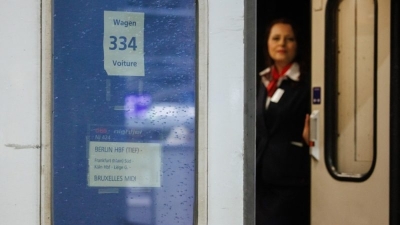Europe’s industrial decarbonisation at risk amid sharp drop in CO2 price

The sharp drop in the EU’s CO2 price, caused by high energy prices and political uncertainty, risks the carbon market’s credibility – and may become an obstacle to the bloc’s industrial decarbonisation.
The price of CO2 allowances under the EU Emissions Trading Scheme (ETS) has almost halved in one year. The price of a tonne of CO2 fell from €95 in February 2023 to €52 in February of this year.
These are worrying signals, given that the carbon price was put in place to encourage structural decarbonisation by giving businesses a long-term perspective – an effect that the sharp drop may turn on its head.
Producers of low-carbon energies are sounding the alarm: prices need to rise to decarbonise the economy by making the use of carbon-based energies less competitive.
“Low CO2 prices are slowing down the decarbonisation of the electricity sector: coal-fired power stations are producing before gas-fired power stations, which emit less,” Marion Labatut, director of European Affairs at the French state utility EDF, told Euractiv.
And “if [carbon] prices remain low and revenues are lower than forecast, the Commission could increase the volumes [of CO2 allowances] to be sold in 2025-2026, which would lead to a further fall in CO2 prices,” she adds.
At the very least, the Commission should assess the impact of this measure on the CO2 market “and avoid putting even more allowances on the market”, because, in addition to decarbonisation, public finances could be heavily impacted, she concludes.
EU countries are bound to channel some of their income from selling carbon allowances to boost the green transition – money that is already spoken for, often years in advance. Should carbon prices consistently stay below predictions, public money would need to fill the funding gaps.
A boon to some
However, not all industry stakeholders are as worried.
“Higher carbon prices in the EU […] may also increase the risk of carbon leakage and investment, which means a loss of market share in the EU and production moved outside Europe without necessarily protecting the climate,” said Cefic, the EU’s chemical industry association.
In turn, low carbon prices would decrease the risk of carbon leakage – where companies leave Europe to produce more cheaply elsewhere while emitting the same amount of CO2.
Yet, both Cefic and the European steel industry continue to bet on public money, disbursed via contracts known as ‘Carbon Contracts for Difference’. These contracts create a higher, fictional CO2 price to make investments into clean production methods more attractive.
Cefic stressed the need for “a combination of a long-term price signal, favourable conditions for the deployment of low-carbon solutions and a market for low-carbon products”.
Why the downturn?
For Matthias Buck, Europe director at the think-tank Agora Energiewende, “the price of emission allowances is the result of supply and demand”.
“On the supply side, there are a lot of allowances in circulation,” he added. In 2022, the EU agreed to put an additional 20 million certificates, of 1 million tonnes of CO2, into circulation to finance the bloc’s turn away from Russian fossil fuels.
“On the demand side, the slight growth in Europe and the rise in energy prices have reduced the consumption of fossil fuels and therefore the need to use allowances,” adds Buck.
Almost half of the emissions in the EU ETS are traditionally purchased by the industrial sector, which has been hampered by high energy prices and political uncertainty.
“The reason why we are not seeing a lot of buying at the moment, which would push prices up, is that multi-year investments and speculation are currently limited from a financial and strategic point of view,” says Michael Pahle, an ETS expert who researches at the Potsdam Institute for Climate Impact (PIK).
For Pahle, the hesitancy of investors in decarbonised energies can also be explained by the growing political pressure against the EU’s climate ambitions.
“Market behaviour is consistent with a focus on short-term fundamentals, potentially amplified by speculators who continue to bet on falling prices,” he notes.
“The problem is above all that for many projects, including those bidding for public support, the price per tonne of CO2 is supposed to be a parameter that defines the rate of return on decarbonisation investments,” continued the steel industry representative.
In the long term, between the recovery of the European economy and the reduction in the number of allowances in circulation, modelling indicates that the price per tonne of carbon in 2030 should be in a range of between €90 and €190.
According to projections, the amount of CO2 emitted in 2026-27 should be about the same as today. Given the mandatory decline in permit availability, the market could become tight again, to the amount of a few hundred million tonnes of CO2 permits.
The EU is aiming for the end of allowances in 2039, when the ETS hits zero.
Read more with Euractiv




